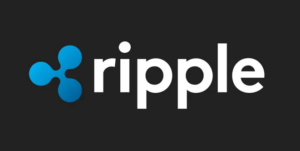Ripple’s XRP has been making waves in the cryptocurrency world lately, with its price reaching new all-time highs. But the big question on everyone’s minds is whether XRP can rival Bitcoin in terms of popularity and value. Let’s delve into the details to understand what’s fueling these price surges and what the future might hold for XRP.
One key factor driving XRP’s recent price surge is its unique technology and use case. Unlike Bitcoin, which aims to be a decentralized digital currency, XRP is designed as a digital payment protocol for fast and low-cost cross-border transactions. This focus on real-world utility has attracted interest from financial institutions and payment service providers looking to streamline their international payment processes.
Another important aspect contributing to XRP’s rise is its close relationship with Ripple, the company behind the cryptocurrency. Ripple has been actively working to establish partnerships with banks and financial institutions globally to promote the adoption of XRP for cross-border payments. These partnerships not only validate XRP’s utility but also create demand for the cryptocurrency, thus driving up its price.
Moreover, XRP’s scalability and speed are significant advantages that make it an attractive option for large volume transactions. The XRP Ledger, which is the underlying technology supporting XRP, can handle a high number of transactions per second, making it efficient for use in global payment networks. This scalability gives XRP an edge over other cryptocurrencies that may suffer from slow transaction speeds and high fees during times of high network activity.
In terms of price performance, XRP has shown impressive growth in recent months, breaking through previous all-time highs and garnering attention from investors seeking to diversify their crypto portfolios. The growing interest in XRP has also been fueled by market speculation and positive sentiment surrounding its potential to disrupt the traditional financial industry.
However, it’s essential to note that XRP still faces regulatory challenges in some jurisdictions due to its ties with Ripple and concerns about its classification as a security. These regulatory uncertainties could impact XRP’s long-term growth potential and create volatility in its price movements.
As for the question of whether XRP can rival Bitcoin, it’s important to consider that the two cryptocurrencies serve different purposes within the broader cryptocurrency ecosystem. While Bitcoin remains the dominant digital currency and store of value, XRP has positioned itself as a solution for efficient cross-border payments. Whether XRP can challenge Bitcoin’s dominance ultimately depends on its ability to gain widespread adoption among financial institutions and bridge the gap between traditional finance and the world of cryptocurrencies.
In conclusion, the recent price highs achieved by XRP are a testament to its growing prominence in the crypto space. With its focus on real-world utility, strategic partnerships, and technological advantages, XRP is poised to continue its upward trajectory. Whether it can rival Bitcoin in terms of market capitalization and mainstream acceptance remains to be seen, but one thing is for sure – XRP is definitely a cryptocurrency to watch in the coming years.



